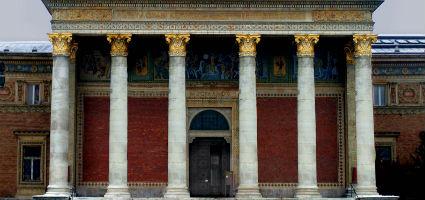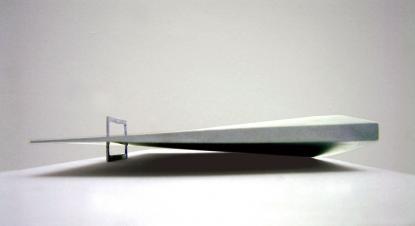2024. May 1. Wednesday
Kunsthalle - Budapest
 |
Address: 1146, Budapest Dózsa György út 37.
Phone number: (1) 460-7000, (1) 363-2671
E-mail: info@mucsarnok.hu
Opening hours: Tue-Wed 10-18, Thu 12-20, Fri-Sun 10-18
|
The exhibition has closed for visitors.
2003.06.17. - 2003.08.03.
Museum tickets, service costs:
|
Ticket for adults
|
1200 HUF
|
|
|
Ticket for adults
(valid for the Kunsthalle and the Ernst Museum)
|
1400 HUF
|
|
|
Group ticket for adults
(from over 10 people)
|
800 HUF
|
/ capita
|
|
Ticket for students
(EU citizens from the age of 6 to 26 )
|
600 HUF
|
|
|
Ticket for students
(valid for the Kunsthalle and the Ernst Museum, 6-26 years of age)
|
700 HUF
|
|
|
Group ticket for students
(from over 10 people)
|
400 HUF
|
/ capita
|
|
Ticket for pensioners
(valid for the Kunsthalle and the Ernst Museum, 62-70 years of age)
|
700 HUF
|
|
|
Ticket for pensioners
(EU citizens from the age of 62 to 70)
|
600 HUF
|
|
|
Ticket for families
(1 adults + 2 children)
|
1800 HUF
|
/ family
|
|
Ticket for families
(2 adults + 2 children)
|
2400 HUF
|
/ family
|
The exhibition tries to provide an insight into what have happened in the branch of sculpture since the middle of the 1990'ies. The new generation seem to be less willing to stick to the avant-garte norms and types. The Hungarian visual environment have also gone through radical changes. The Mass-produced art works in the fireld of fine arts, the renaissance of appropriation and photorealism provided a natural background for a new perspective. At the time of the enhancement of the technical medium the artistic thought began to draw back into works once again dreamt into closer an dtighter frames. The functional openness of the installation - that also secured freedom for the artists - gave its place to an opening toward the spactators.

The exhibition documentates thet "status" following the installation, and also point out those characteritics which recalled this change. Also, it represents those plastical problems that have brought about novums in the world of plastic art.
The temporal solitude of sculpture as a branch, and then its coming into the focus signifies an important change in the attitude: the outstanding attention given to the field after the break, together with the thorough and demanding work can be leading to possible changes in the field. The exhibition tries to follow up this process in which the objects are extended toward the new alternatives in the application of forms.
Besides its significance in the fine art history, the exhibition was set to be an interesting and entertaining event for the general public, too.

The exhibition documentates thet "status" following the installation, and also point out those characteritics which recalled this change. Also, it represents those plastical problems that have brought about novums in the world of plastic art.
The temporal solitude of sculpture as a branch, and then its coming into the focus signifies an important change in the attitude: the outstanding attention given to the field after the break, together with the thorough and demanding work can be leading to possible changes in the field. The exhibition tries to follow up this process in which the objects are extended toward the new alternatives in the application of forms.
Besides its significance in the fine art history, the exhibition was set to be an interesting and entertaining event for the general public, too.
